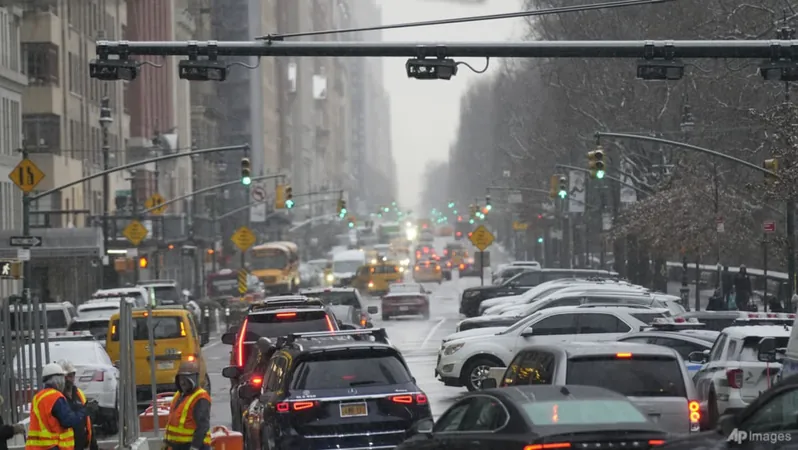
New York City Unveils Groundbreaking $9 Congestion Charge for Manhattan Drivers – What You Need to Know!
2025-01-06
Author: Daniel
Introduction
In a historic move, New York City has implemented a $9 traffic congestion charge for drivers entering Manhattan, the first of its kind in the United States. This revolutionary initiative, aimed at alleviating gridlock and funding public transportation, officially began on Monday following a New Jersey court's decision not to intervene.
Details of the Congestion Charge
The congestion charge affects passenger vehicles during daytime hours in Manhattan's bustling southern region, specifically south of 60th Street. For larger vehicles such as trucks and buses, the toll can soar up to $21.60, while nighttime drivers will benefit from a 75% discount—making the cost only $2.25. This new tolling system is facilitated using advanced electronic license plate readers, charging private cars once per day, irrespective of multiple trips. Taxis will incur a smaller fee of 75 cents per ride, whereas ride-share services like Uber and Lyft will charge riders an additional $1.50 per trip.
Reasoning Behind the Charge
The decision to push for the congestion charge comes after an urgent desire to reduce the 700,000 vehicles that flood into Manhattan's central business district daily, resulting in an average speed of just 11 km/h—23% slower than traffic speeds recorded in 2010. New York's Metropolitan Transportation Authority anticipates that the charge could reduce traffic by approximately 80,000 vehicles per day, which equates to an impressive 11% reduction in congestion.
Global Comparisons
This initiative mirrors similar successful strategies employed globally, most notably in London, where a congestion fee was introduced in 2003 and has now reached £15 (around $19). Experts, such as Sarah Kaufman from New York University's Rudin Center for Transportation, predict that while resistance to such fees is common at the outset, communities often come to appreciate the long-term benefits—ranging from reduced traffic delays to enhanced public transit options.
Projected Revenue and Impact
The city projects that the congestion charge could generate $500 million in revenue in its inaugural year. New York Governor Kathy Hochul emphasized the importance of these funds, stating that they are crucial for supporting a $15 billion investment in the improvement of subways, buses, and other mass transit solutions.
Conclusion
As the congestion charge comes into effect, it remains to be seen how Manhattan's drivers will adapt to this change. Will this innovative approach set a precedent for other major U.S. cities facing similar traffic dilemmas? Only time will tell, but one thing is for sure – New York City is paving the way for a potentially transformative traffic solution!

 Brasil (PT)
Brasil (PT)
 Canada (EN)
Canada (EN)
 Chile (ES)
Chile (ES)
 Česko (CS)
Česko (CS)
 대한민국 (KO)
대한민국 (KO)
 España (ES)
España (ES)
 France (FR)
France (FR)
 Hong Kong (EN)
Hong Kong (EN)
 Italia (IT)
Italia (IT)
 日本 (JA)
日本 (JA)
 Magyarország (HU)
Magyarország (HU)
 Norge (NO)
Norge (NO)
 Polska (PL)
Polska (PL)
 Schweiz (DE)
Schweiz (DE)
 Singapore (EN)
Singapore (EN)
 Sverige (SV)
Sverige (SV)
 Suomi (FI)
Suomi (FI)
 Türkiye (TR)
Türkiye (TR)
 الإمارات العربية المتحدة (AR)
الإمارات العربية المتحدة (AR)